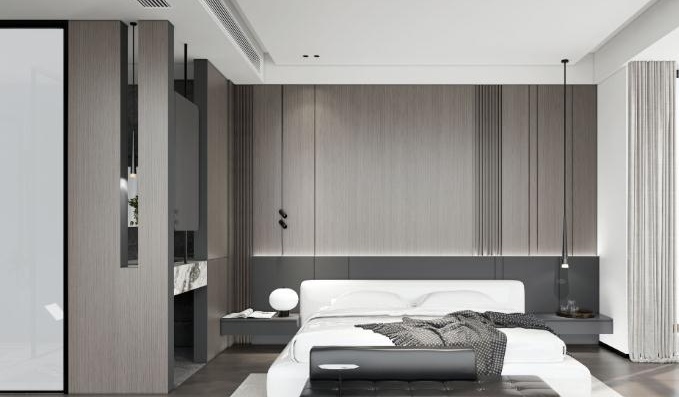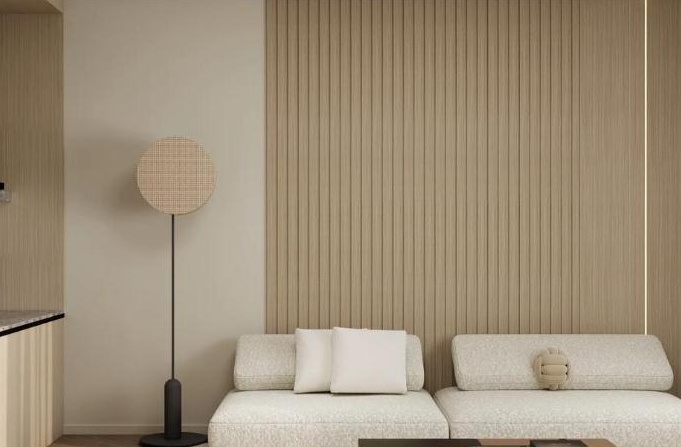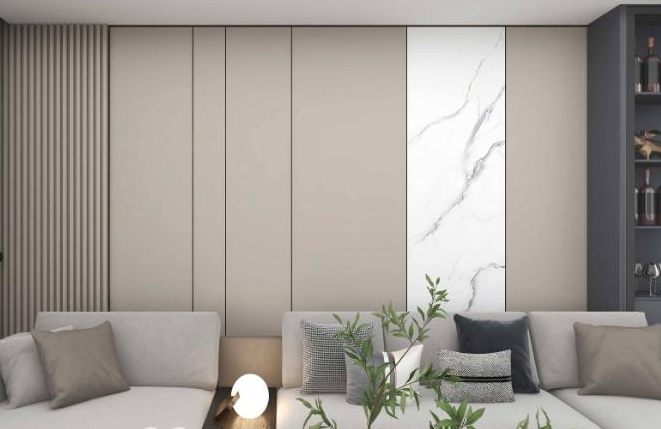contacts:Mr. xiong
phone:18665576061
Tel:18665576061
Add:No.35 huangcun Rd,Tianhe District,Guangzhou china
Wood veneer, a versatile and aesthetically appealing material, has become a cornerstone in contemporary interior design and
architecture. By bonding thin layers of natural wood or synthetic wood-like materials to substrates such as density boards or
plywood, wood veneer combines functionality with artistry. Its growing popularity stems from a range of advantages that cater
to both residential and commercial spaces, making it a preferred choice for designers and homeowners alike.

One of the most compelling benefits of wood veneer is its ability to replicate the organic beauty of natural wood while offering
design flexibility. Whether using authentic wood species like oak, walnut, or teak, or opting for cost-effective alternatives such
as PVC laminates or engineered wood, veneers provide diverse textures, grains, and colors. This adaptability allows designers
to create cohesive themes—from rustic farmhouse charm to sleek minimalist interiors—without compromising on visual harmony.
For instance, light-toned oak veneer can brighten a compact living room, while dark mahogany panels add sophistication to
a corporate office.
In an era prioritizing eco-conscious choices, wood veneer stands out as a sustainable alternative to solid wood. By utilizing thin
slices of timber, it maximizes the use of each log, reducing deforestation and waste. Many manufacturers adhere to international
certifications like FSC (Forest Stewardship Council), ensuring responsible sourcing. Additionally, synthetic veneers made from
recycled materials or low-VOC (volatile organic compound) products further minimize environmental impact, aligning with
green building standards such as LEED.

Unlike traditional wood cladding, wood veneer panels are lightweight and designed for rapid installation. Pre-finished
veneers with interlocking systems or adhesive backings enable seamless application on walls, ceilings, or furniture surfaces,
significantly cutting down renovation time. Maintenance is equally straightforward: regular dusting and occasional polishing
with wood-friendly cleaners preserve its luster. Unlike wallpaper or paint, veneers resist peeling and fading, ensuring long-term
durability.
Beyond aesthetics, wood veneer enhances functional comfort. Its natural porosity absorbs sound waves, making it ideal for
spaces requiring noise reduction, such as conference rooms, theaters, or open-plan offices. Furthermore, wood’s inherent
insulating properties help regulate indoor temperatures, contributing to energy efficiency—a critical factor in both cold and
tropical climates.
Wood veneer bridges the gap between luxury and affordability. High-end natural wood finishes emulate the opulence of solid
timber at a fraction of the cost, while synthetic options offer budget-friendly solutions for large-scale projects. For example,
hotels and commercial complexes often opt for engineered veneers to achieve premium aesthetics within tight budgets.

Wood veneer exemplifies the fusion of nature and innovation, addressing modern design demands through its aesthetic
versatility, environmental benefits, and practical advantages. As architects and homeowners increasingly seek materials that
balance beauty, sustainability, and functionality, wood veneer continues to redefine interior spaces. By choosing this material,
we embrace a design philosophy that respects both tradition and progress, creating environments that are as timeless as they
are forward-thinking.